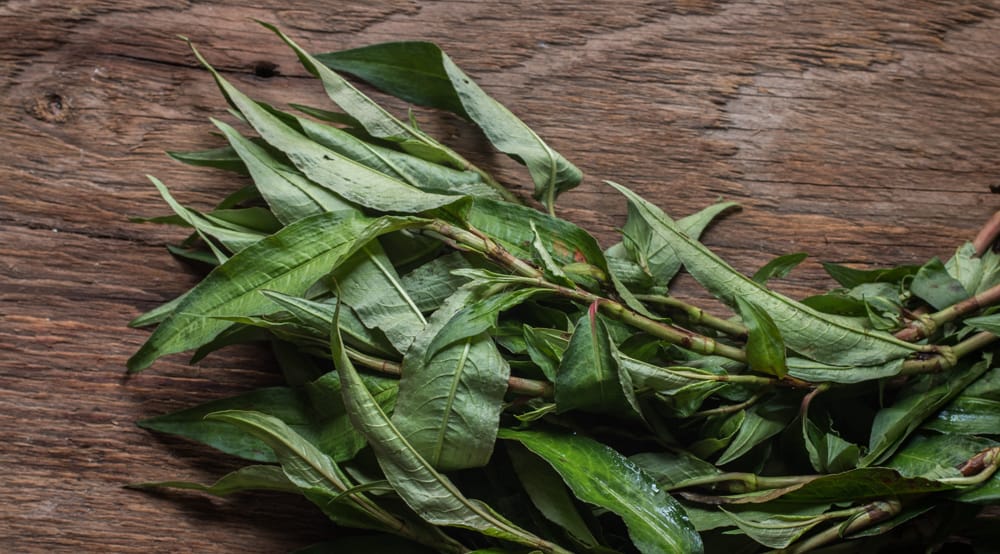
A Traditional Herb From Southeast Asia
What is this herb? I said as I picked up a bundle of greens I'd never seen. "Good Herb!" the older woman told me in her thick Southeast Asian accent. She motioned for me to taste some.
I picked up a leaf, gave it a little crunch to release any aroma and smelled: it was wonderful, a little like cilantro crossed with epazote. Being a cilantro lover, I was in heaven.
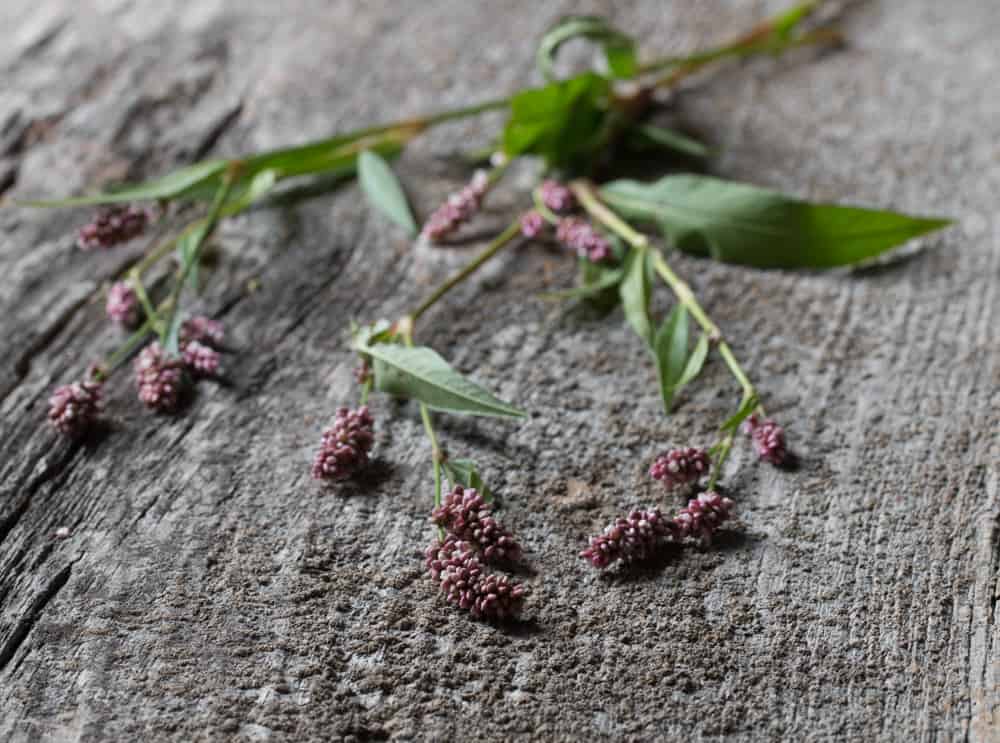
"How do you use it?" I asked. "You cook chicken, you eat when roast chicken", she said. She mimed putting a leaf on top of an invisible chicken niblet in her hand and eating it.
I smiled, nodded and handed her my 3 dollars. She replied with: "You no know how to use, maybe you no buy." I gave her a half-annoyed smile and told her I'd be back next week for the malabar spinach, which they usually had but were out of, and left. I'd just had my first taste of Vietnamese coriander, rau ram.
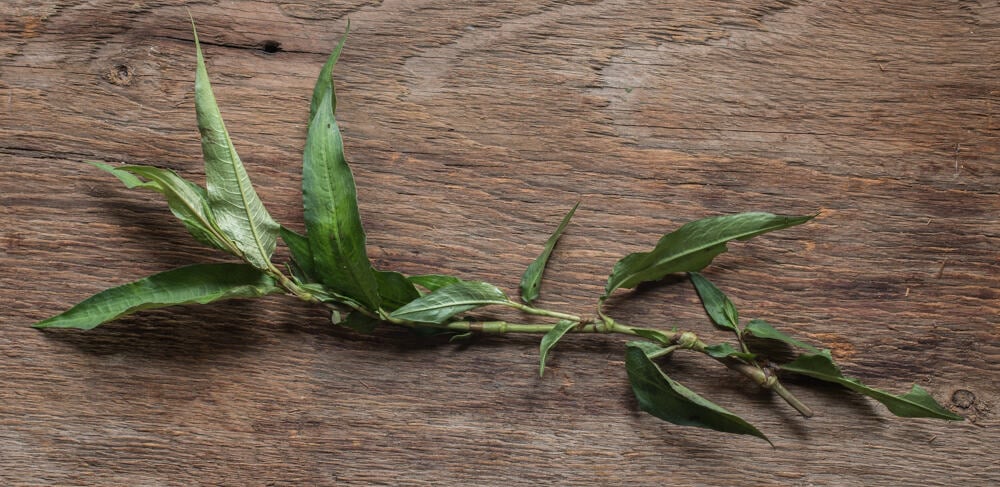
3 Types of Smartweed, 3 Different Tastes
I got home, turned on the computer with a few greens in my lap and got to work. Since the first thing I thought it could be was a type of smartweed, I looked at those first, nada.
All I could find was descriptions of different spicy weeds and other tasteless ones I'd seen locally, but it did tell me the genus name: Persicaria. The next thing I did was search using Persicaria along with Asian cuisine, and there it was: Persicaria odorata, Vietnamese coriander, Vietnamese cilantro, Vietnamese Mint and rau ram. It's also known as laksa leaf.
From my experience wild smartweeds with red flowers (P. hydropiperoides) will be tasteless, those with drooping green flowers (P. hydropiper) will taste like hot chili. Both like the same habitat, and they like to grow together in damp an disturbed areas and come up during the late summer, I started picking them in the middle of August in Minnesota.
The Vietnamese coriander has completely different flowers, (They're white and they actually look like flowers) and is not wild-growing, from what I can tell.
Growing
Since I know the farmers don't use green houses, I know the plant can be grown the Midwest, and having seen the aggressiveness that smartweeds have, it probably isn't going to be difficult.
WWhere I live in the north the plant should be planted as an annual. It will be perennial if it the winters aren't too cold.
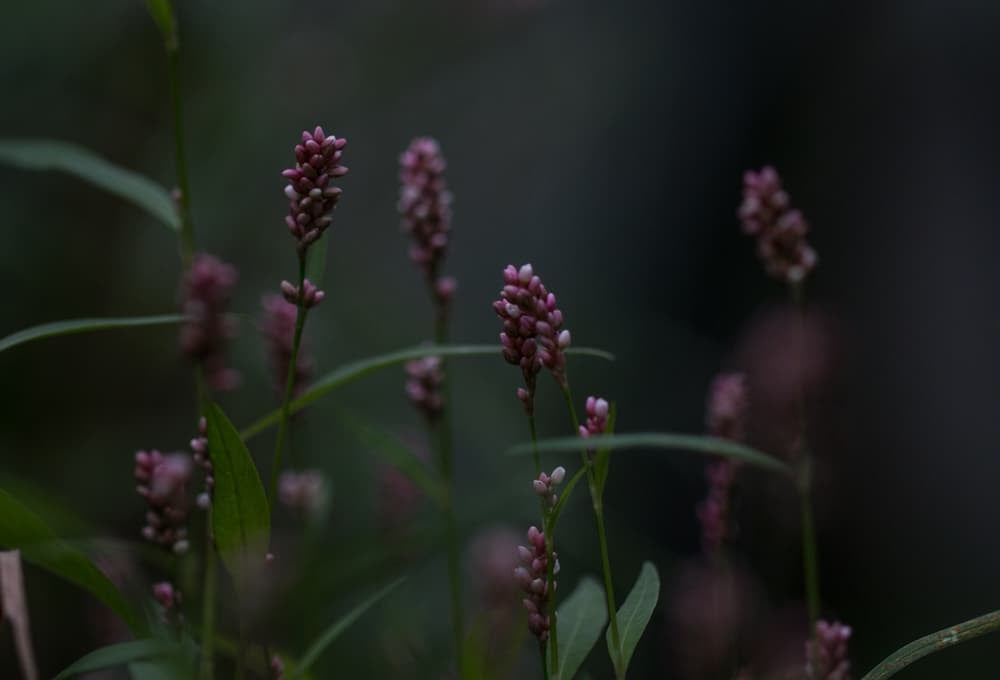
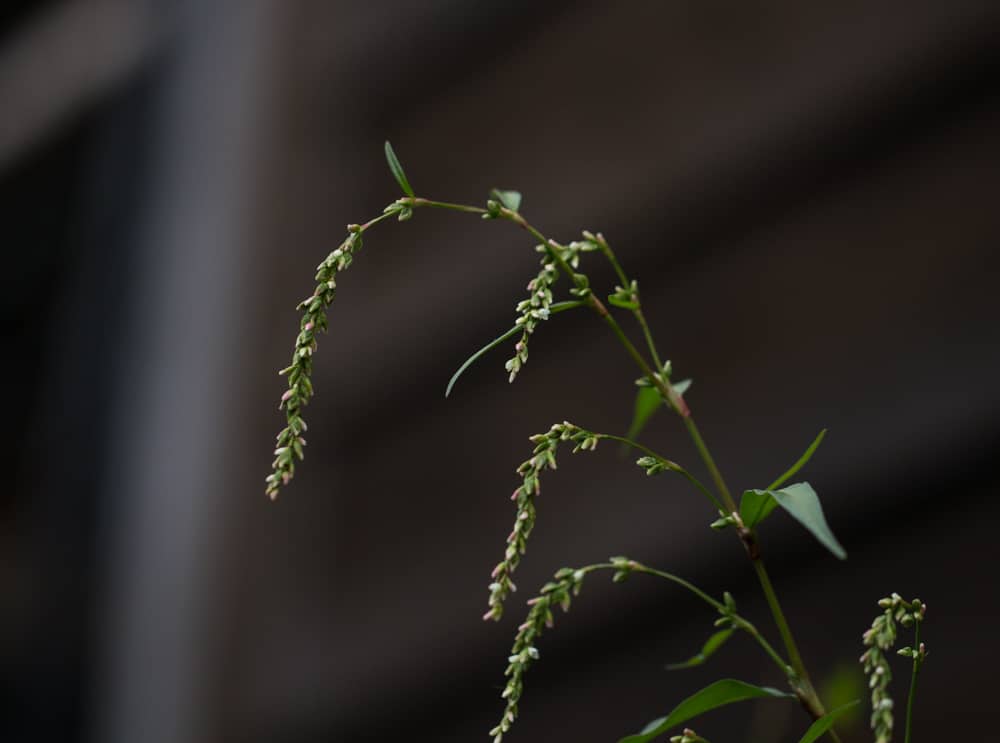
Cooking
Channeling the Hmong woman I spoke to, I played cooked with the laksa leaf and tried it a few different ways. Every way I tried it, I loved it. It's a strong herb, and it'll take over if given the chance, but overall a great addition to the summer aromatic arsenal.
My mouth is watering imagining it next to a bowl of broth or pho along with some fresh mint and cilantro to mix in with the noodles right before they hit your mouth for blasts of aroma. Here's some ideas:
- Add it to Vietnamese Chicken Salad
- Add it to Soups, especially pho
- Use anywhere you would cilantro
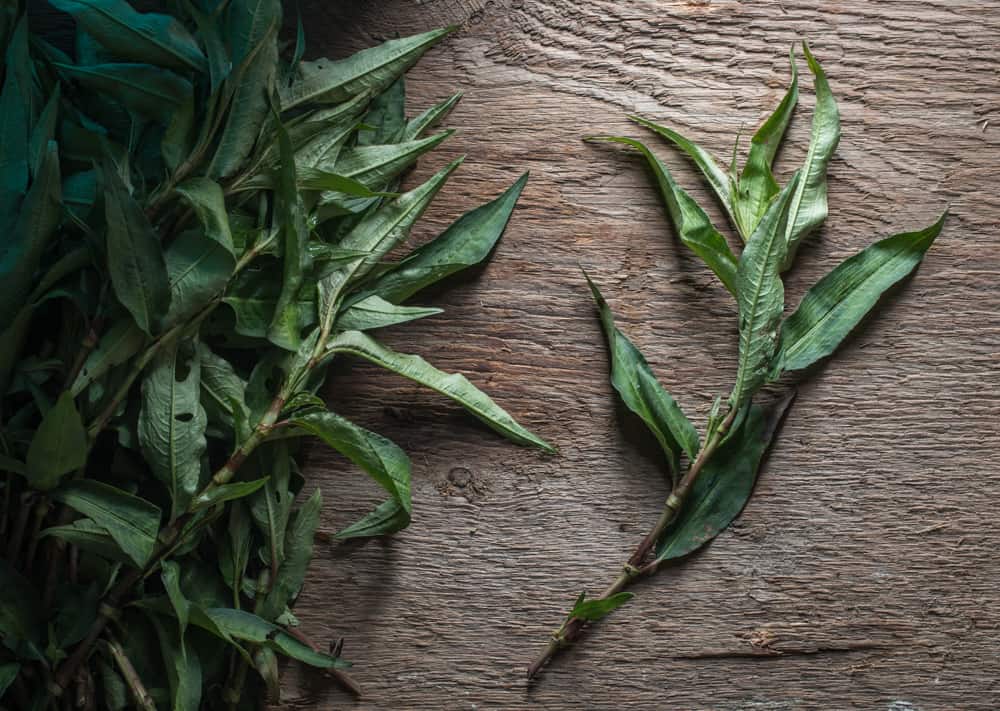
The first way I served it was really simple: a garnish for some flank steak and a hash of vegetables from the garden and lobster mushrooms.
You take a bite of meat, put a leaf on it, eat it, with a dash of lime, maybe. This is just an example, if you want to see the formal recipe see Limousin Flank Steak with Mushroom Hash
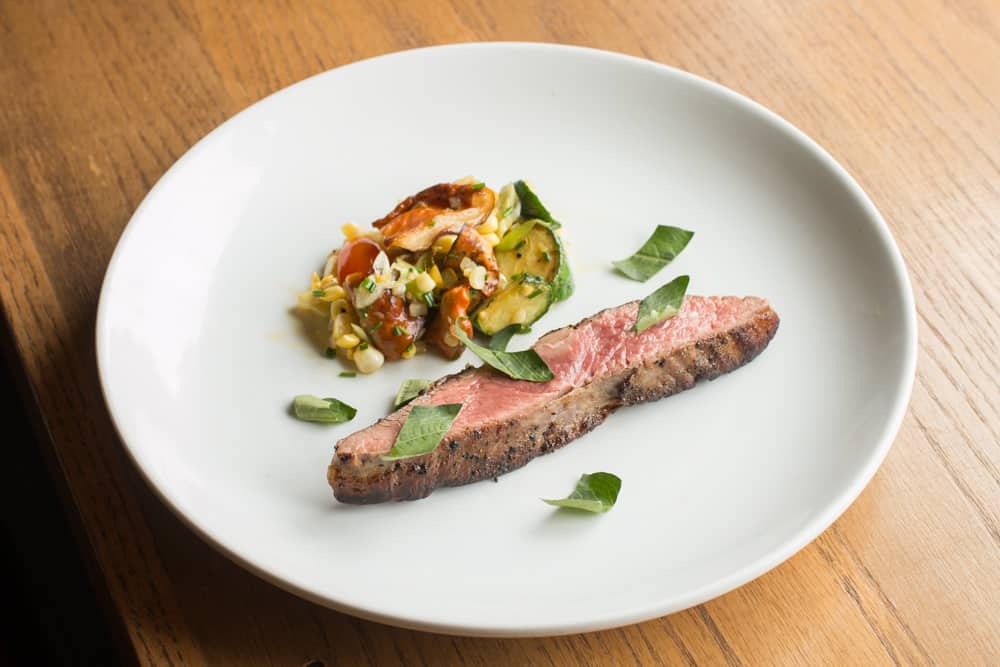

mac
Hi, I live by a river in Canada and there is a lovely patch of water pepper growing right at the edge. I have tasted the leaves and shared with friends who all love it! I am hoping to save the flowers (they look like peppercorns) and mill them as pepper, and also to grind some leaves and stems with salt to make a spicy herb salt. It seems to lose a lot of its spiciness when dried, so I want to find a way to keep the zing into the winter. And Eub, the ground freezes and floods here, and it seems to be doing just fine!!
Lucy Birkett
My curiousity has been SPARKED!
I did a few searches looking for seed, no avail-- any ideas?
I just started your book, excited about it, thank you!
Nef
Hi!
Funny and good to know!
By any chances, do you know if we can eat it in large quantities without health problem? I mean, like basilica or spinach?
Because it is so easy to grow, it is tempting to eat "too much" of it, is it possible to eat "too much" of it?
Thank you 🙂
Theza
in Malaysia we call it daun kesum. We use interchangeably with cilantro. Its a relative of mint and thrives in 1/2 sun and wetter earth. Its amazing with lemongrass, tamarind, galangal etc all Southeast Asian herbs. I also like to add it in my Vietnamese rice paper rolls!
Alan Bergo
Theza, that is some great information, I really like this herb, and others from the genus Persicaria. I'm curious, do you use waterpepper or Persicaria hydropiper? It's spicy hot like horseradish.
Chi Vu
I just made the chicken dish that lady was talking about. You just need to mix the following ingredients: steamed shredded chicken (white or dark mix), chopped rau ram (destemmed), lime, salt, and chili peppers (optional).
Alan Bergo
Thanks Chi.
Connie
In Oz we call this Vietnamese mint
eub
Oh, you don't need to worry about if maybe it's nameless and incommunicable! Rau ram is the Vietnamese name (if you touch up the vowels), various other languages have their own, I don't know the Hmong. Loss of culinary cultural tradition is for real but I don't know that you need to direct your concern at this particular herb. Looks from here whoever goes into the next generation of the kitchen will know its name and use, it's commonly grown (pots in water trays on the back doorstep of the Vietnamese restaurants) and also sold as you saw. Unless users of it think it's at risk?
Do grow some, it's delicious, vigorous, and best of all a perennial. I don't grow actual cilantro anymore because it bolts while your back is turned. (Not that they're interchangeable, but, eh, it's tastier than that bolted cilantro.)
Have you seen it grown outdoors? Don't know how you'd overwinter it in the Midwest, it's a frost-tender from a warmer climate. Hm, roots that are under some water (it tolerates/likes that) might be protected if that doesn't freeze solid.